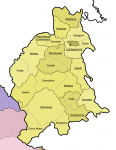Makemakean
Mr Makemean
- Pronouns
- Logical, unlike those in German
I strongly oppose the translation of fasci into league. It's much more fun when you translate it as sheaf or bundle.
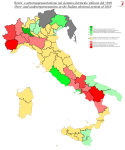

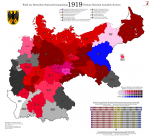
I don't actually have results at lower levels (and I'm not sure they exist - @Erinthecute may correct me if I'm wrong)
STATISTISCHES REICHSAMT: Die Wahlen zur verfassunggebenden Deutschen Nationalversammlung am 19. Januar 1919 mit einer Karte der Wahlkreise und farbiger Darstellung der Zahl und Parteistellung der in jedem Wahlkreis gewählten Abgeordneten (= Vierteljahreshefte zur Statistik des Deutschen Reichs – 28. Jg., 1919, Erstes Ergänzungsheft), Berlin 1919.
DASS. (Hrsg.): Vierteljahreshefte zur Statistik des Deutschen Reichs, 28. Jg. 1919, Viertes Heft.
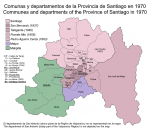
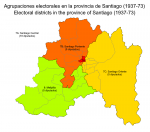
1883 statistical atlas (including political maps), printed when this bloke was eight years old, and that's not the earliest either. There's a non-political one from the year before he was born, and I think the French may have got before that too.I'm pretty sure some of those American statistical maps @Thande found are earlier.
1883 statistical atlas (including political maps), printed when this bloke was eight years old, and that's not the earliest either. There's a non-political one from the year before he was born, and I think the French may have got before that too.
You can basically define the cultural divide between North and South in the US (not quite the same as Union vs CSA) by looking at the county voting patterns in that period, rather than the other way around - it cuts across Illinois, Indiana and Ohio for instance. Urban-rural divides were much less apparent then, e.g. Chicago or Philadelphia could vote Republican, or more accurately, one side might vote Republican and one side vote Democratic based on demographics.Most counties in the South are Democratic, while most counties in the North are Republican. Though what is interesting is how there really doesn't appear to be a rural-urban divide in the North. If I ever get around to doing that machine learning project of mine, it would be interesting to try to get a more granular look at who voted Republican and who voted Democratic in the North in the era between Lincoln and FDR.
The parliamentary impasse created by the 1920 elections was solved, three weeks after the elections, by the appointment of a centre-right minority government, led by the Centre's Constantin Fehrenbach (who had been President of the old Reichstag and then the National Assembly) and consisting of Centre, DVP and DDP. The SPD chose to go into opposition, but supported the government tactically so as to maintain the republican front. Benefits were modestly increased during Fehrenbach's eleven months as Chancellor, but he would focus above all on foreign affairs, as Germany and the world settled into its post-war reality.
Chancellor Fehrenbach travelled to Spa in July 1920 to meet with David Lloyd George and Alexandre Millerand and, hopefully, work out a satisfactory repayment plan for the enormous war reparations stipulated in the Treaty of Versailles. The Spa Conference came to no definite conclusion on the size of reparations, but set proportions for payments to each of the Allied Powers, and required Germany to deliver five million tons of coal a month to the Allies for six months. Though the Allies promised to pay for the coal, the take was less than it would've been if sold commercially, and the shipments deprived German industries of fuel. There immediately arose tensions within the government over how to deal with the situation, with the still right-wing DVP urging a more confrontational line, and this eventually caused the fall of the Fehrenbach ministry in May 1921. It was replaced by a centre-left coalition of Centre, DDP and SPD, led by the more left-leaning Centrist Joseph Wirth, who had been Finance Minister in Fehrenbach's cabinet.
By then, the collapse of the German economy had begun in earnest. Terms for the payment of reparations and war debt (Germany having funded its war effort almost entirely through borrowing) were finally set by the Allies in April, and Germany made its first payment on schedule in June. The currency markets reacted about as well as you'd expect to the sudden disappearance of two billion 1914 marks from the economy, and the German currency entered its infamous inflationary death spiral. By the end of 1921, one US dollar was worth 330 marks. By the end of 1922, the figure was 7,200, and by November 1923, four trillion (we'll get to the details of that second crash later on). The government paying its reparations by printing paper money and using it to buy foreign currency did not help matters.
Wirth's strategy was to make an earnest attempt to comply with Allied demands, and thus demonstrate that actually following them would be a financial impossibility. However, almost everyone to his right was convinced he was really no more than a cypher for the Allies, and calls for his assassination went up by the day. In August, former Finance Minister and current informal government adviser Matthias Erzberger was killed while holidaying in the Black Forest. His assassins were right-wing nationalists who viewed him as a traitor for having signed the Versailles Treaty, and escaped to Hungary before they could face justice. Erzberger's funeral became a pro-republican political rally, with thousands in attendance and Chancellor Wirth delivering the eulogy.
Meanwhile, the government had come to the realisation that there was one foreign power that wasn't bound by the Allied diplomatic conventions and might be amenable to trade - Soviet Russia. After an international conference in Genoa in April 1922 ended in failure, German and Soviet representatives travelled to Rapallo, a short way down the coast from Genoa, and signed a treaty of friendship there. The two countries agreed to renounce all claims on each other's territory, to establish a firm peace based on equality and mutual goodwill, and to resume trade. The Treaty of Rapallo also included secret clauses establishing military cooperation between the Red Army and the rump Reichswehr, although these were publicly denied at the time.
The German foreign minister responsible for negotiating the treaty was Walther Rathenau, an engineer, businessman and billionaire who was the head of the AEG sphere, which included as many as 84 different companies located across the globe. Rathenau was also Jewish, and even though he was a moderate liberal by inclination who only happened to see Realpolitik benefits to aligning with the Soviets, the right naturally saw the Treaty of Rapallo as the first blast of the trumpet in the Judaeo-Bolshevik takeover of the German nation. Two months after the treaty was signed, Rathenau was riding a car from his home to the ministry when one of the passengers in a passing car opened fire with a submachine gun. It was the second assassination of a prominent democratic politician by right-wing extremists in less than a year, and it soon transpired that the same organisation was responsible for both Erzberger's and Rathenau's deaths. Organisation Consul, a death squad made up of former Freikorps soldiers, was in fact responsible for at least 354 murders since the end of the War. When the Reichstag convened the following day, Wirth made the most famous speech of his career: "There stands the enemy, who trickles poison in the wounds of a nation. There stands the enemy - and there is no doubt about it - the enemy stands on the right!"
A law banning the O.C. (don't call it that) was passed within a month, but the death of Rathenau and the ensuing nationwide panic had caused renewed government instability. Wirth's recipe for ending this crisis was to attempt to bring all democratic parties together into a grand coalition, but his efforts met with no success, and he finally resigned the chancellorship in November 1922. President Ebert, hoping to achieve national unity by different means, replaced Wirth's government with a technocratic ministry chaired by HAPAG director Wilhelm Cuno. It was hoped that Cuno, as a shipping magnate with good connections in London and New York, would be in a unique position to sort out Germany's foreign policy issues, but this was too much to bargain for. Cuno's proposed repayment plan was vetoed by the French, and when Germany fell behind on coal shipments, the Allies invoked the enforcement clauses in the Treaty of Versailles and occupied the Ruhr Area.
The occupation of the Ruhr would last more than two and a half years, from January 1923 through to August 1925. It was a provocation the German government could not allow to stand unanswered, and though no one had any desire to restart the War, the locals were urged to passively resist the occupation authorities. The occupation and the resultant protests would result in around 130 German civilian deaths, and the economy of the Ruhr Area, Germany's largest industrial engine, came to a near-complete halt. Again, the mark entered a cycle of inflation, this time the worst ever seen in the history of the world. By the autumn of 1923, basic commodities cost billions or trillions of marks, and banknotes were being used as cheap wallpaper. Savings vanished overnight, and there seemed to be no way to salvage the collapsing currency. The French government refused to treat with German representatives unless passive resistance was ended, which left Cuno with precious few options. In August, a series of wildcat strikes erupted calling for Cuno's resignation, and for a brief moment it seemed as though Germany was heading toward a general strike. That motion was quashed, however, by the SPD leadership, which was convinced the crisis needed to be solved by parliamentary means or else there might be another revolutionary crisis. A vote of confidence was tabled in the Reichstag on the 12th of August, which passed easily, and Cuno left office, his technocratic experiment a dismal failure.
This time, efforts to bring about a grand coalition were successful, and the DVP's Gustav Stresemann (a monarchist at heart, like most of his party, but a tacit supporter of the republican front as a guardian of German democracy) became Chancellor with a broad majority in the Reichstag. The new government immediately set about resolving the crises facing Germany one by one. The strikes of August were resolved through the creation of a binding arbitration system, which passed the Reichstag with broad support in early October. Passive resistance to the Ruhr occupation was dropped as an official policy in September, and President Ebert signed a declaration of emergency that broadened the government's powers in domestic affairs greatly (though not as greatly as the laws allowed - more on that in later instalments...). Hyperinflation was solved through the introduction of a new currency, the Rentenmark ("mortgage mark"), which was backed by government bonds that were in turn index-linked to the price of gold. Twelve zeroes were cut from prices, and the new mark proved reasonably stable.
Most notably, Stresemann initiated talks with the French, the British and the Americans, of which the latter two were far more favourably inclined to the German perspective now than they had been in 1919. By the time those talks came to fruition, Stresemann's chancellorship was over - the strikes in August that had brought down Cuno were the end for the SPD, but only the beginning for those on their left. In October, the Comintern adopted a plan of action to bring down the "bourgeois" Weimar Republic and replace it with a communist state, and in October, the state elections in Saxony saw the KPD enter government on the state level for the first time ever, as the SPD's junior coalition partner. Stresemann smelled a rat, and using the emergency powers vested in him by President Ebert, he ordered the Saxon government dismissed from office and the state placed under commissioners' rule. This decision caused the SPD to abandon the Stresemann government and go into opposition, and that in turn sealed Stresemann's fate. As soon as the Reichstag reconvened, a motion of confidence was tabled, and failed - technically, this did not force Stresemann's resignation, but he still left office rather than try to cling on. In the new cabinet, a centre-right minority government similar to the Fehrenbach cabinet, Stresemann accepted the position of Foreign Minister, which allowed him to carry on treating with the French into 1924.
The new Chancellor was Wilhelm Marx, a Centrist of the old school who, contrary to what his name would imply, was no great friend of the left. His government was focused on ending the crisis and restoring Germany's financial stability, and to this end, the highly controversial Lex Emminger was promulgated over the opposition of the Reichstag, abolishing jury trials and replacing the former twelve-member juries with panels consisting of three judges and six lay judges. This was presented as a cost-saving measure, and faced stiff opposition from the legal profession as well as the left, but it remains the foundation of the German judiciary to this day.
There was little else Marx had time to do before the general election was due. The Reichstag's term was set to expire in June, but Marx's government decided to call the election for the 4th of May. The campaign was every bit as spirited as that of 1920, and saw the government attacked from both left and right, the KPD invoking the dismissal of the Saxon government as a sign that Germany was sliding toward fascism while the DNVP invoked the Rapallo Treaty, the French troops still in the Ruhr and the ongoing negotiations as signs that Germany was sliding into a position of servitude to foreign powers.
The election result saw a massive rightward shift, as the KPD failed to capture the support of the former USPD (which had merged back into the SPD in late 1922) while the DNVP grew hugely, mostly off of DVP voters who resented their party's turn to constructive engagement with the hated republic. The DNVP remained the clear right-wing opposition, but new forces also entered the Reichstag. In November of 1923, a disaffected former soldier named Adolf Hitler gathered around two thousand followers and attempted to overthrow the Bavarian state government, using Mussolini's march on Rome as a blueprint and acting with the blessing of the former army commander Erich Ludendorff. The "Hitler-Ludendorff-Putsch", which was soon rechristened the Beer Hall Putsch by the foreign press, saw sixteen insurgents killed by police as order was restored, and Hitler himself was captured and imprisoned for treason. The trial of Hitler created a martyr for the extreme right, and a coalition of Hitler's NSDAP (temporarily banned after the putsch), Ludendorff's supporters in the völkisch movement and some right-wing splinters off the DNVP cobbled together a Reichstag candidacy under the name of the "National Socialist Freedom Movement". This managed to gain 32 seats in the new Reichstag, which along with the DNVP and KPD factions meant that even the broad coalition led by Stresemann would've enjoyed no more than a threadbare majority.
Though the situation was less dire than in 1920, there were still French troops in the Ruhr and the reparations issue was still unsolved. Germany's troubles would continue...

I’ve seen at least one coloured election map from the July Monarchy era.I think the French may have got before that too.
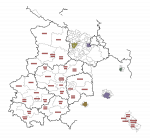
Definite same energy as all those US state legislatures which go to all the trouble to draw districts which nobody ever contests anyway.Here's a preview of one of the most pointless election maps I've ever made. I've previously done the 1990 Volkskammer election, the only one in the history of that institution where the votes cast actually mattered, and until now I'd assumed that the previous iterations were all elected through a single nationwide list. Not so, as it turns out - as in Poland, the GDR was divided into small-ish constituencies that elected between four and thirteen (though usually between six and ten) members. Each constituency's local representatives were supposedly selected through an open process, though the fact that the seat distribution between the different National Front parties was determined in advance makes me seriously question how open that process really was. Anyway, these constituencies seem to have been the same at least between 1963 (the earliest ordinance I can find - the 1954 electoral law mentions that each constituency should elect 10-20 members, so I've got some reason to suspect they were bigger at that time) and 1986, the last "single-party" election. The below map shows the constituencies in those regions where I'd previously finished drawing the municipal map, plus East Berlin (which only voted in 1981 and 1986 - it had representatives in the Volkskammer before then, but much like the West Berlin representatives in the Bundestag, they were indirectly elected to avoid upsetting Berlin's weird legal status). For obvious reasons, majority shading would be a bit redundant, and none of the membership lists I've found show which constituency each member represented, so this is really as much as I can do with this information.
View attachment 59148
I believe the Hungarians did as well.This is very interesting because it does seem like various Communist countries had different approaches to their fake elections. For instance, the Czechoslovak Communists switched to FPTP the moment they took power in 1948. And AFAIK they never looked back.
